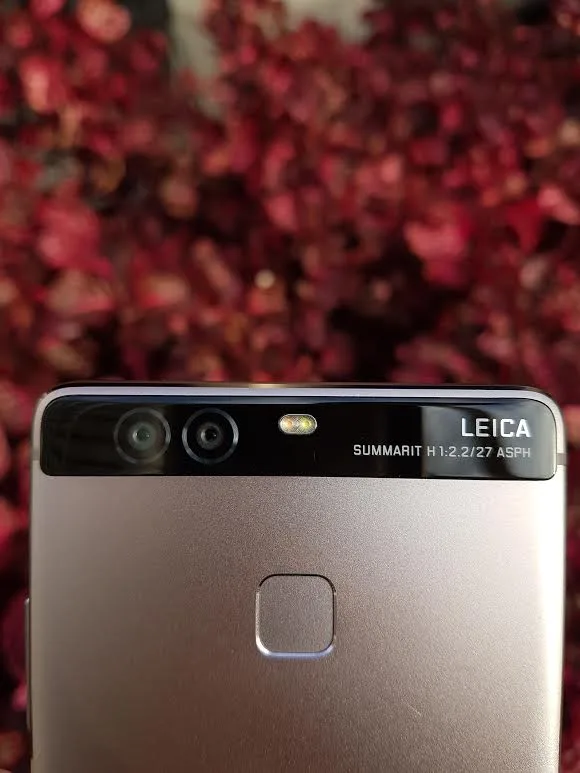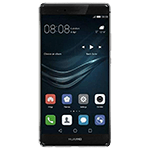Huawei P9 Review: You’ve come a long wei, baby
Summary
The Huawei P9 is delightful to use and a landmark achievement for the increasingly popular manufacturer.
Details
Pricing & Availability
| RRP | $799 |
| Launch date | 2016-04 |
The good
- What we Leica 'bout the camera
- Enduring battery life
- EMUI skin and one handed use
The bad
- Processing power
- Display not quite up to scratch
- No water resistance or removable battery
If you had placed a Huawei Ascend in my hand two years ago, I would have set fire to it and danced on its ashes.
In more recent times, Huawei has genuinely impressed with the capable mid-range P8 Lite and last month's big, bold Mate 8. This upwards trajectory is also reflected in its sales.
In January 2016, Huawei became the third largest phone manufacturer in the world, behind heavyweights Apple and Samsung. Maybe it's the confusing name (by the way, it's pronounced wah-way), but despite its popularity, Huawei remains relatively unknown in Australia. With three big names, Leica, Scarlet Johansson and Henry Cavill backing it, the P9 might be the handset that finally puts Huawei on the map.
Upsides: Why you'd want the Huawei P9
- What we Leica 'bout the camera: The dual camera is easily the P9's strongest selling point. Though it's not all Huawei's made it out to be, and the Leica branding is just there to lure in wannabe Ken Duncans, the P9's dual 12MP camera is still something to marvel at. The P9's dual camera works by snapping two images at once. One shot is taken in colour and the other in black and white. The P9's software then automatically overlays both the colour and monochrome image, creating a single clean photo. The black and white shot is able to take capture a lot of light and detail as there is no colour filter. When merged the two photos create one very crisp photograph. When the S7 released, I was very impressed by its camera and while I wasn't as immediately struck by the P9's camera, the results side-by-side do show the P9 has the upper hand. The dual camera setup has also allowed Huawei to engineer a handset with no "camera bump" – a regular design peeve for most Apple and Samsung users.

- Enduring battery life: The P9 is quite a large handset. At 5.2 inches, it's larger than both the Galaxy S7 and iPhone 6s (but also thinner than both). The P9 is packs a large 3000mAh battery and its benchmark score is indicative of that.
| Handset | Geekbench 3 Battery Test Duration | Geekbench 3 Battery Score |
|---|---|---|
| Samsung Galaxy S7 Edge | 11:55:00 | 7150 |
| Huawei Mate 8 | 11:14:40 | 6659 |
| Samsung Galaxy S7 | 10:01:20 | 6013 |
| Samsung Galaxy Note 5 | 9:18:00 | 5580 |
| Huawei P9 | 8:26:30 | 4948 |
| Samsung Galaxy S6 Edge+ | 8:24:10 | 5041 |
| Apple iPhone 6S Plus | 7:48:10 | 4681 |
| LG G5 | 7:36:10 | 4561 |
| Google Nexus 5X | 7:14:20 | 4062 |
| HTC 10 | 6:54:30 | 4145 |
| Samsung Galaxy S6 | 6:51:30 | 4115 |
| Sony Xperia X Performance | 6:46:51 | 4068 |
| Oppo R9 | 6:41:50 | 4018 |
| Apple iPhone SE | 4:27:10 | 2671 |
| Apple iPhone 6s | 3:52:10 | 2321 |
While it doesn't contend with Samsung's S7 and S7 Edge (not many phones do), it's important to remember that this is a "cheap" premium device with a $799 price point.

- EMUI skin and one handed use: Cheap Android skins are usually a UX aficionado's worst nightmare. In the past, Huawei has been one of the worst offenders. The EMUI skin on the P9 is actually a pleasure to use. Huawei has been working towards culling the glittery features of EMUI for some years now, and while there are still some odd design choices, like its persistently absent app drawer, it has mostly benefited from the change. The quick-access menu at the bottom of the screen has had a tidy revamp. Swiping up from the home or lockscreen gives you instant access to music controls, camera, calculator, torch and voice recordings. I can't stress how much of a welcome addition this is. It makes using regular apps one-handed a breeze.
Downsides: Why you might not want the Huawei P9
- Processing power: The Huawei uses HiSilicon's (owned by Huawei) Kirin 955 processor. While it handles most of the phone's more intensive tasks with relative ease, extensive use surfaced some noticeable imperfections in swipe, lock and app transition animations. With that said, we did play a handful of graphically demanding games. including Real Racing 3,with little to no lag. Our benchmark test produced mixed results for the P9. Its single core test scored well below Apple, Samsung, HTC and Sony's latest. However, when it came to the multicore test, the Huawei P9 outperformed most of the competition, coming a close second to Samsung's notably powerful Galaxy S7 Edge. As always, these numbers aren't a totally accurate representation of how it actually performs. It's a case of hands-on experience trumping the data.
| Handset | Geekbench 3 Single Core (higher is better) | Geekbench 3 Multi Core (higher is better) |
|---|---|---|
| Samsung Galaxy S7 Edge | 2169 | 6446 |
| Huawei P9 | 1736 | 6357 |
| Samsung Galaxy S7 | 2156 | 6240 |
| Huawei Mate 8 | 1738 | 6092 |
| LG G5 | 2305 | 5243 |
| Sony Xperia X Performance | 1988 | 5198 |
| Samsung Galaxy S6 Edge+ | 1492 | 4893 |
| Samsung Galaxy S6 Edge | 1324 | 4626 |
| Google Nexus 6P | 1251 | 4597 |
| Samsung Galaxy S6 | 1347 | 4569 |
| Apple iPhone SE | 2538 | 4455 |
| Apple iPhone 6S | 2540 | 4410 |
| Apple iPhone 6S Plus | 2491 | 4391 |
| HTC 10 | 1942 | 4191 |
| Sony Xperia Z5 | 1358 | 4134 |
| Samsung Galaxy Note 5 | 1111 | 3686 |
| Google Nexus 5X | 1188 | 3198 |
- Display not quite up to scratch: The second concession Huawei have made to make the P9 an affordable premium is in its display. Its IPS LCD 1080 x 1920 display is not hideous by any measure, it just isn't quite as glitzy as the Galaxy S7's AMOLED. Although IPS NEO screens claim to lose no quality when viewed from the side, the P9's display loses a noticeable amount of colour and contrast when viewed from some angles. Angled viewing is something the S7's display handles particularly well, but there's a noticeable drop in resolution and pixel density in the P9's display when viewed from the side. Yes, the Galaxy S7's 1440 x 2560 display with 557 ppi pixel density outshines the P9's 1080 x 1920 with 423 ppi, but the difference is marginal and would likely go unnoticed unless you were really trying to pick the two apart.
- No water resistance or removable battery: Though most premium handsets, like the S7 and Z5 are going the way of the iPhone by making their battery sealed, they do so with the added benefit of some kind of water resistance or proofing. The P9, while having a sealed battery, offers nothing in the way of water resistance. With water damage being a leading cause of smartphone damages, water proofing is a huge benefit that should not be overlooked. And while the P9's battery is sure to last if you're only planning to hang on to it for a phone contract's two year life cycle, the sealed battery might not be an issue. However, if you're the type to hang on to a handset until its on its very last legs, replacing the P9's battery down the line could prove expensive.
Who is it best suited for? What are my other options?
The Huawei P9 will more than satisfy those who want a premium smartphone experience, but don't want to take out a second mortgage to fund a fancy new gadget. For all its pros, the P9's shortcomings are relatively minor, especially considering that attractive price tag.
For someone who has spent a significant amount of time with both the iPhone 6 and S7, I honestly expected to be switching back from the P9 as soon as possible. However, that's not the case. I genuinely enjoyed my time with P9's camera and love-it-or-hate-it Emotion UI and I think the average user will be stretched to find a fault with Huawei's budget premium handset.
If the P9's short list of flaws do bother you, your next best options would be the S7 Edge or iPhone 6S, both of which are going to cost you a good deal more.
If you're interested in the P9 but need a little more screen real estate, Huawei's Mate 8 would also be a viable choice.
Where can I get it?
Huawei has plans to sell the P9 on contract through all four major telcos in Australia (Telstra, Optus, Virgin and Vodafone), however only Telstra and Voda have begun offering it at the time of review.
